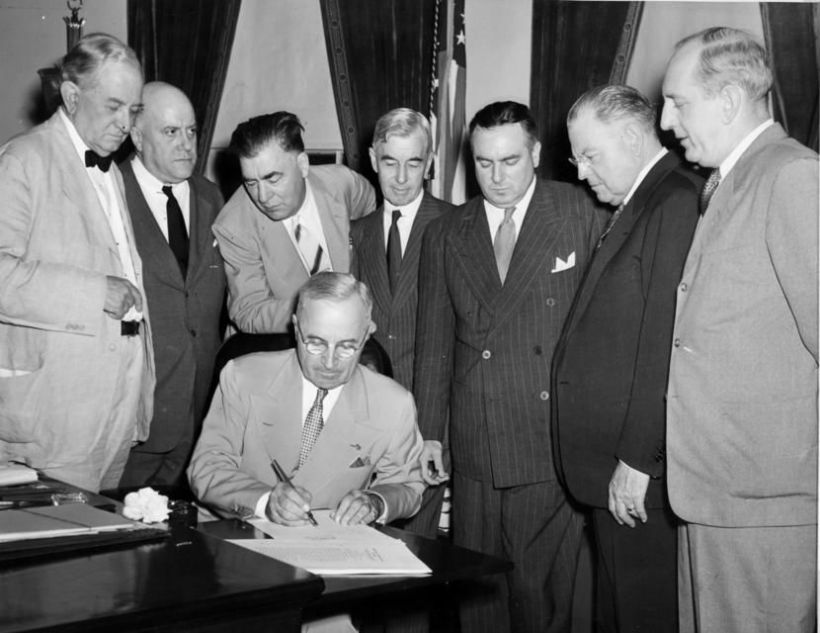On 1 August 1946, US President Harry Truman signed the Atomic Energy Act, also known as the McMahon Act.
Senator Brien McMahon, a Democrat from Connecticut and chairman of the US Senate Atomic Energy Committee, proposed the bill that transferred control over nuclear power from the military (the Manhattan Project) to the US Atomic Energy Commission (AEC). The General Advisory Committee, which included the largest group of American scientists, was created as well. Robert Oppenheimer, the “father of the atomic bomb”,was the committee’s first chairman.
The purpose of the commission was to promote and control scientific nuclear development. From 1 January 1947 members of the AEC were legally given full control over the factories, laboratories, equipment, and personnel employed during the war for the production of the atomic bomb. Under the Atomic Energy Act, all production facilities and nuclear reactors became state-owned, and all technical information and research findings were to be transferred to the United States Atomic Energy Commission. The commission was also responsible for the development of America’s nuclear arsenal.
Subsequently, under the administration of President Dwight Eisenhower (who gave a related speech, “Atoms for Peace” in 1954) the act was amended to expand participation in nuclear projects to private companies. The amendments limited the access to information on US nuclear programmes for their allies, which caused a rift between the US, the UK, and Canada - the members of the Manhattan Project.
Source:
Allardice Corbin, Trapnell Edward R. The Atomic Energy Commission. - Praeger, 1974
























